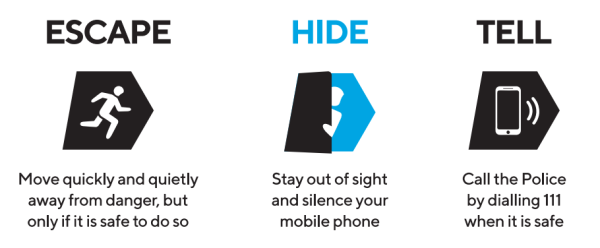The crowded places strategy helps owners and operators protect the lives of the people using a crowded place to work, or as a visitor. The strategy reflects local context and values, linking to Te Whare Tapa Whā - Sir Mason Durie’s model of health and well-being.
Crowded places are locations large numbers of people access easily, on a regular and predictable basis. These can change depending on the time, and other changes in circumstance. They can be attractive targets for attacks.
The Royal Commission of Inquiry (RCOI) into the Christchurch mosque shooting in 2019 made 44 recommendations, all of which were accepted by the Crown. The crowded places strategy was developed in response to the RCOI recommendations.
Royal Commission of Inquiry into the Attack on Christchurch Mosques on 15 March 2019 – Royal Commission
The crowded places strategy
The strategy has four elements:
- Building stronger relationships
Organisations will use existing partnerships to make sure they’re aware of the risks at crowded places, and to increase resilience to attacks. Government Property Group is a member of the Business Advisory Group (BAG), which meets quarterly and is one of three Groups reporting through to the Crowded Places Advisory Group (CPAG). The other groups are a Community Advisory Group (CAG), and a Security Advisory Group (SAG).
- Enabling better sharing of information and guidance
The terrorism threat level for New Zealand is assessed annually by the New Zealand Security Intelligence Service (NZSIS). The current threat level is low, meaning a terrorist threat is a realistic possibility. A lower level does not mean there isn’t any risk, and it’s important to note that the national terrorism threat level does not reflect levels of hate speech or violent rhetoric.
National terrorism threat level – New Zealand Security Intelligence Service
- Implementing effective protective security
Agencies need to consider how to deter, detect, delay and respond to an attack. These four aspects of protective security are called layered security. Effective protective security starts with agencies assessing the risks and vulnerabilities of their crowded place and finding ways to mitigate those risks. The New Zealand Police website has a range of tools to help with this process, including options for self-assessment, assessing protective security, detecting hostile investigations, security auditing, and how to recognise and respond to threats.
Prepare your crowded place – New Zealand Police
- Increasing resilience
Building an effective security culture can increase relisience to attacks, and may include:
- incorporating protective security measures (deter, detect, respond, delay) into layered security plans
- weaving the escape, hide, tell approach into site security plans and design for vulnerable sites
- reminding people about reporting suspicious behaviour and encouraging the use of event reporting tools
- using security guards to help identify external people who might be trying to observe your people, information, or assets
- investing in security measures to make sure they can protect your people, information, assets, customers, and members of the public.
Crowded places strategy – New Zealand Police

Identifying extremism
NZSIS guidance can help to identify the signs of violent extremism. A person’s behaviour, activities, associations or relationships may indicate they are developing or promoting extremist ideas.
The guidance also provides advice on where to report suspicious behaviour. If you see something say something.
Know the signs [PDF 2.4MB] – New Zealand Security Intelligence Service
He Whenua Taurikura, the national hui on countering terrorism and violent extremism
The Royal Commission recommended the Government host an annual hui to bring together central and local government agencies, communities, civil society, the private sector and researchers. The goal is to create opportunities for building relationships and sharing ideas about countering violent extremism and terrorism. He Whenua Taurikura translates to ‘a country at peace’.
He Whenua Taurikura – Department of the Prime Minister and Cabinet
